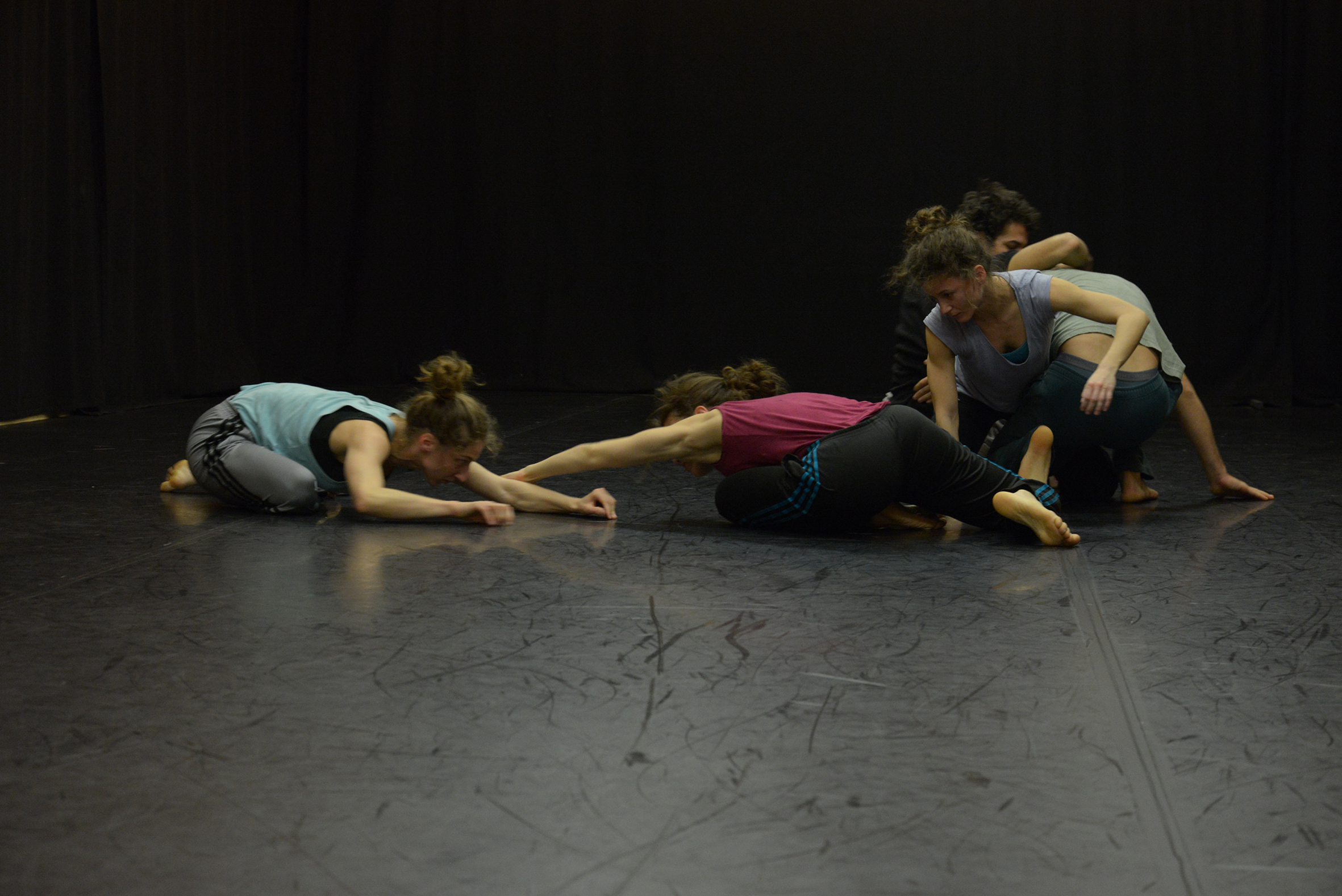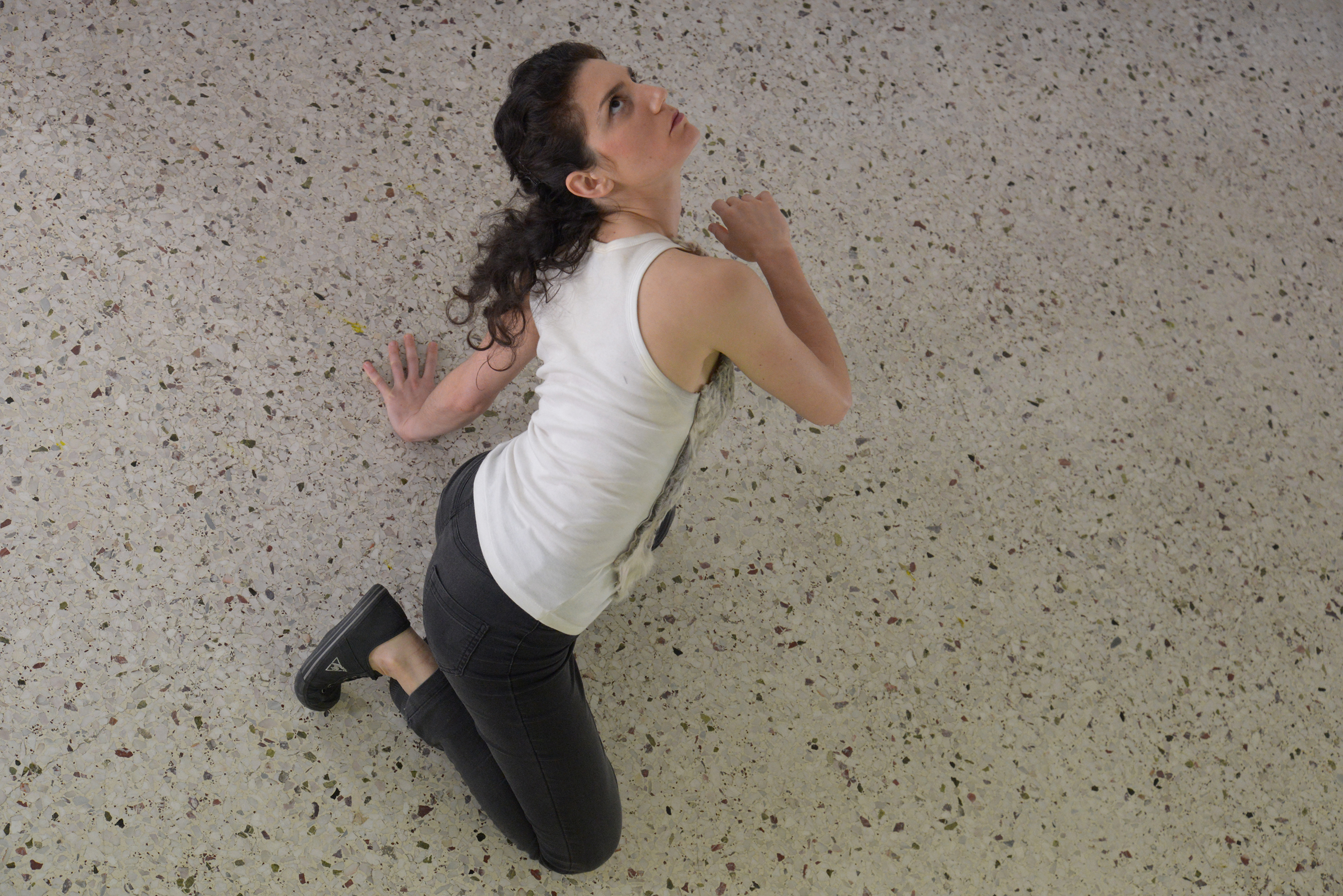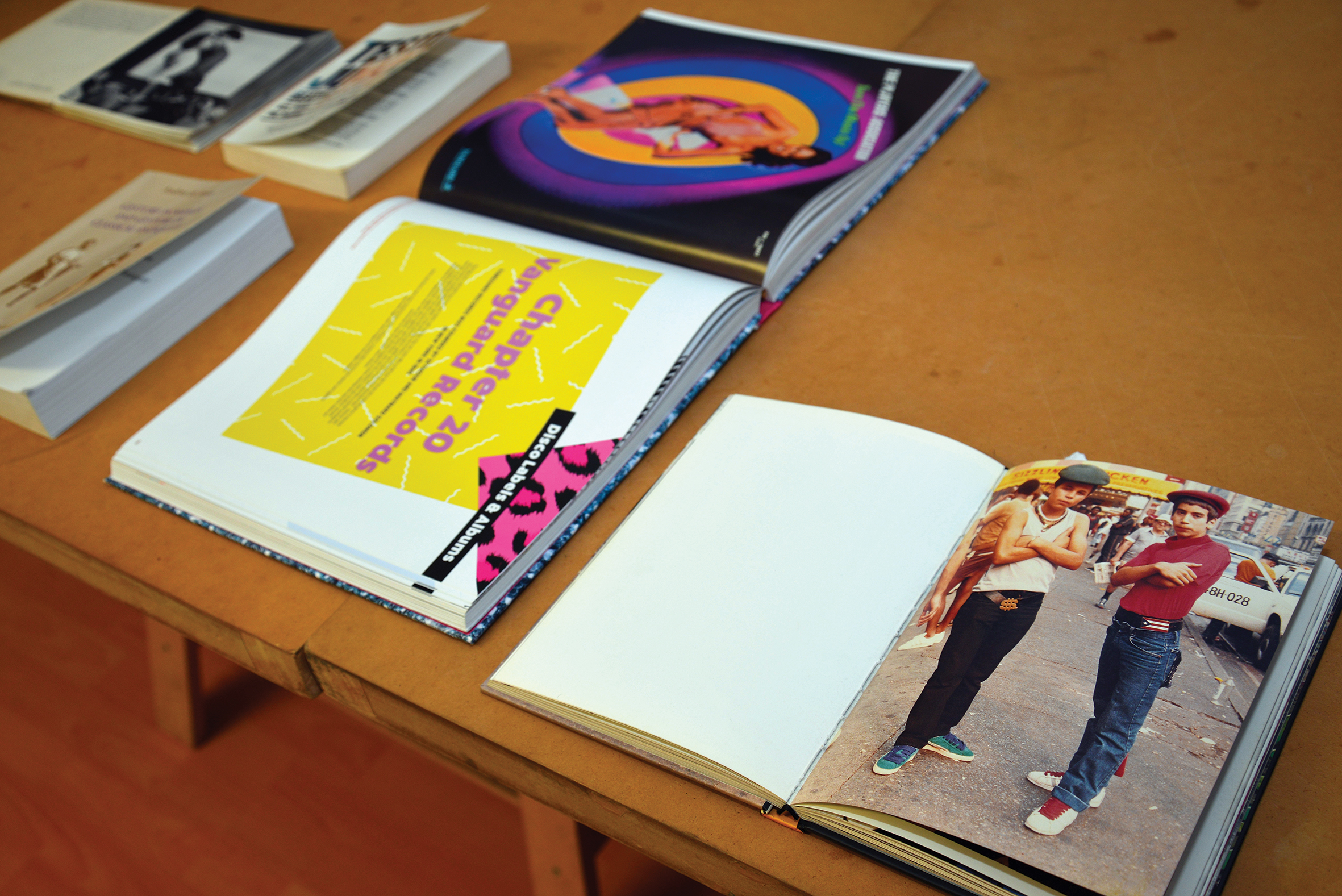

Group show (2016)
In 2015, Lenio Kaklea received a commission from the National Theater of Brest/Le Quartz to put together a program around female choreographers working in Athens. After a field research and a series of encounters with artists, she proposed Iris, Alexandra, Mariela, Katerina et moi, a group show with works that bear few formal resemblances but help outline different modes of community making.






Curator: Lenio Kaklea
Artistic collaboration: Lou Forster
With the stage works (by order of presentation):
Arranged by Date and Margin Release by Lenio Kaklea,
PRIVATE: Wear a mask when you talk to me by Alexandra Bachzetsis,
Alaska by Iris Karayan,
Collective choreography, Untitled #1 by Mariela Nestora
and a work in progress by Katerina Andreou
DJ set: DJ Electric Indigo
Moving Library: Books on the Move
Production: Le Quartz/Nationale Scene of Brest and abd
Supported by K.E.T, Dimitri Alexakis and Fotini Banou
Editorial direction: Lou Forster
With the contributions of Katerina Andreou, Alexandra Bachzetsis, Lenio Kaklea, Iris Karayan and Mariela Nestora
Design: Studio Lialios Vazoura
Published by Big black black mountain the darkness never ever comes
“In March 2015, Matthieu Banvillet, director of Le Quartz, Brest’s National Scene, invited me to curate a “Focus on Athens”.
It was the first time I received such an invitation. Puzzled at first, I thought of it as a great opportunity for me to decipher my multiple identities. I come from a Mediterranean country that struggles financially while being Europe’s eastern and southern border. I’m a woman that sometimes has to deal with sexist work environments. For the past ten years I have been living in a foreign country, France.
Soon enough, I started conducting research on the dynamics of the artistic scene in Athens, the one I had left behind back in 2005. Today the country’s political situation has radically changed and so is my relation to it. As my research was progressing, what proved to be decisive in my choices was the type of relationship choreographers build with their community. When I left Greece, I was carrying an idealized image of a dancer being part of a dance company, but soon enough realized that this condition was becoming obsolete and had to adapt to a much more flexible, precarious and neoliberal work model. By and large, this model of individualization predominates in the current European contemporary dance scene and the dance that is being produced in Athens didn’t seem to be an exception. At least for the most part.
In response to the financial crisis of 2008, a number of artists began to occupy abandoned spaces in downtown Athens in order to work collectively. Collective choreography, Untitled series, a project initiated by Mariela Nestora is the result of such experimentations. In order to think about communities today I needed to consider peripheral modes of production and fresh ways of exchanging ideas within the broad field of contemporary dance, an art on the edge.
For Iris, Alexandra, Mariela, Katerina et moi I didn’t choose works that bear a formal resemblance, but ones that helped me outline different modes of community making. While Iris Karayan develops a formal approach to movement, arranging a group of dancers on stage, Alexandra Bachzetsis investigates numerous androgynous bodies in perpetual transformation. Katerina Andreou’s work in progress deals with different types of autonomy, she also chose to study and develop her work in France and I found in her story bits and pieces of my own journey.
Interested as I was in the choreographic work of women, putting together this program allowed me to explore new ways out of a system that pushes artistic practice to respond to specific institutional demands. Furthermore, I needed to move away from curatorial strategies that I consider alienating such as showcasing “new emerging artists” while feeding a star system that excludes others. Instead, I thought of this focus on Athens as a milestone in the work of the invited choreographers and a step towards starting a dialogue, first amongst us, then with the public.
Just as importantly, curating this program allowed me to think about different ways of performing subjectivity. I slowly realized that I wasn’t making choices according to objective criteria such as the historic or market value of an artwork, the same way an institution usually does. Instead, I thought of how the selection process would define and transform me. The outcome is the reflection of a fragmented, transitional and bastard identity, such as my own, and I invite the public to associate themselves to this breakable and ever-changing identity in motion.” - Lenio Kaklea